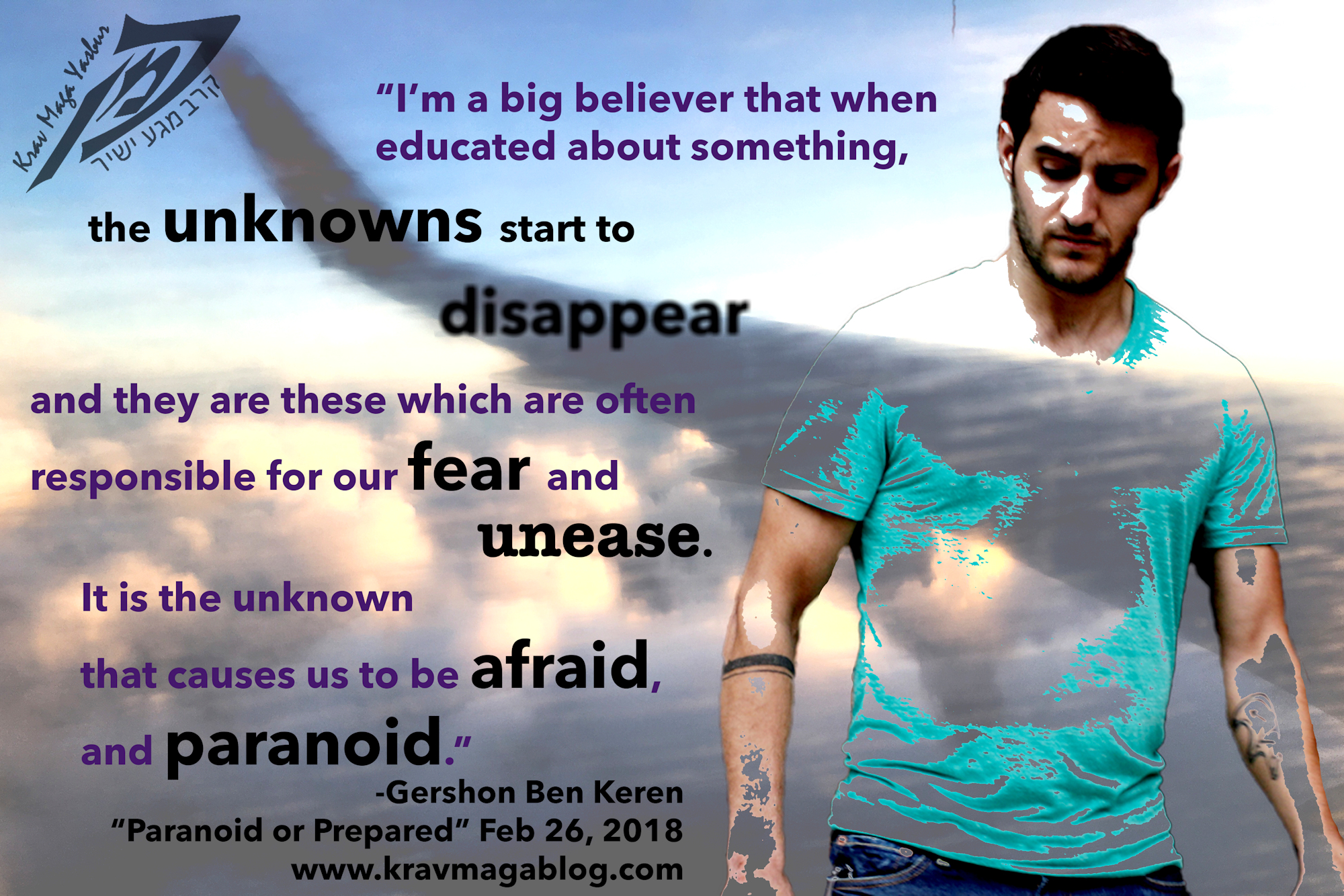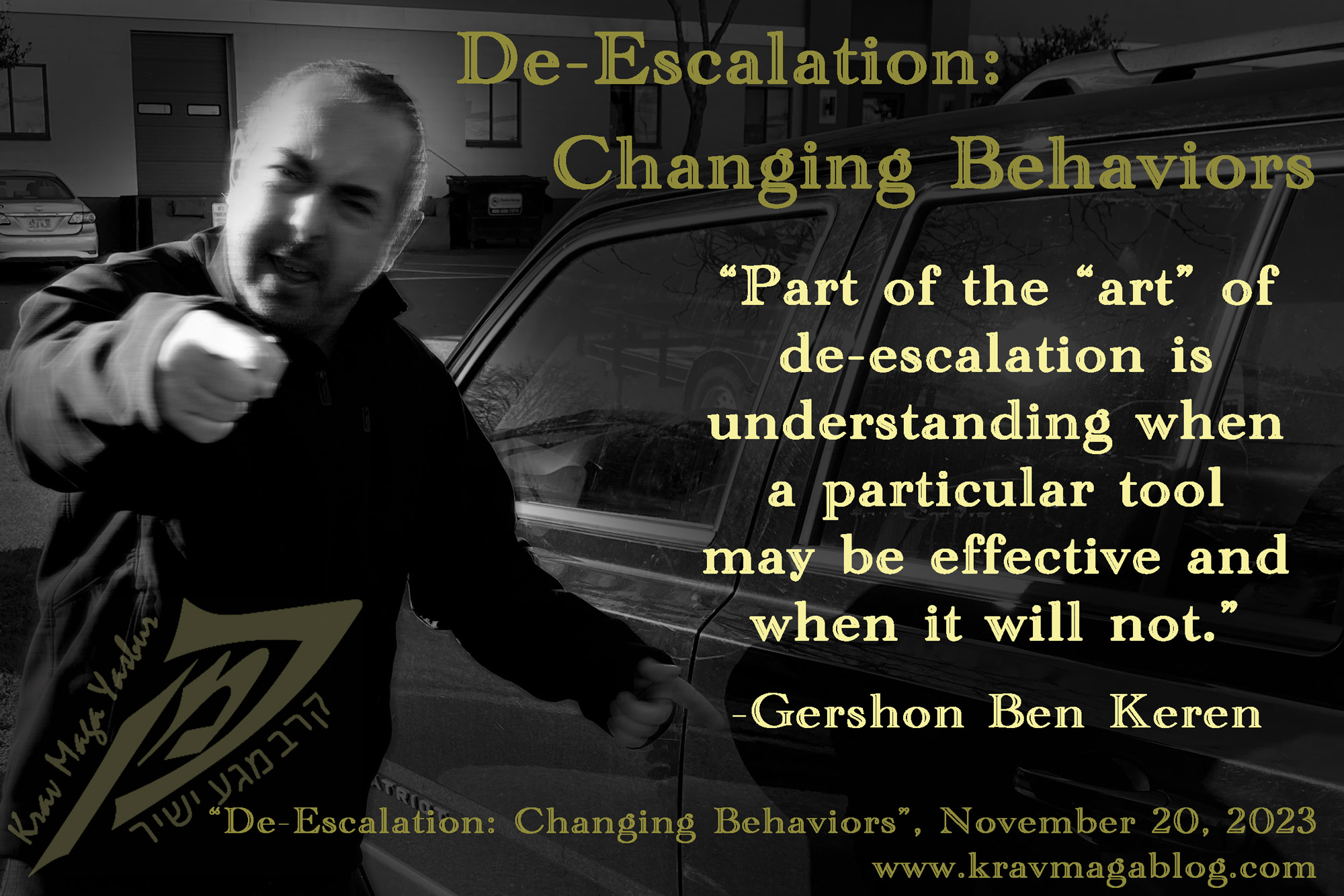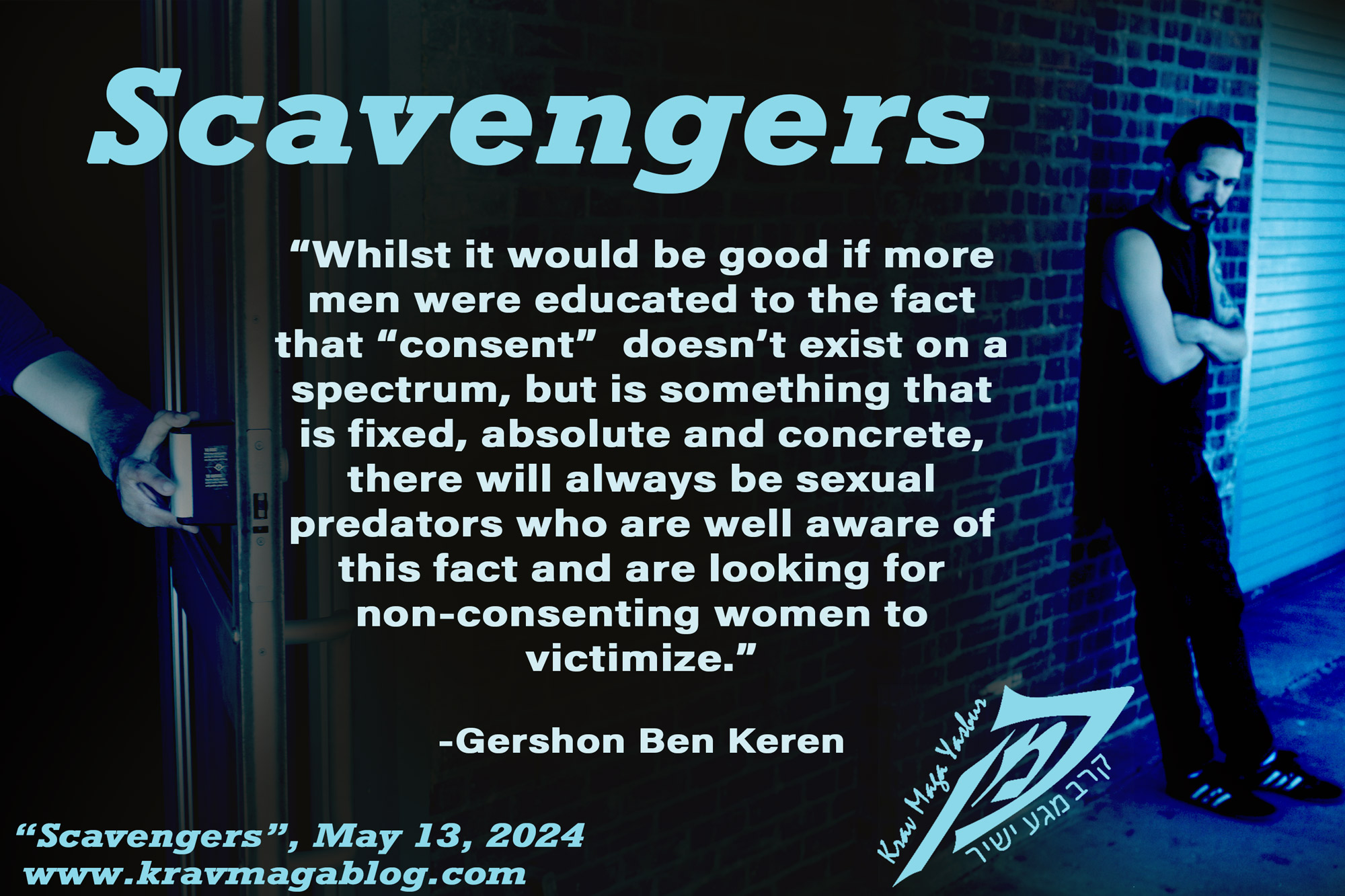Realistic Expectations, is an article written by Gershon Ben Keren, a 5th Degree Black Belt in Krav Maga, who teaches Krav Maga in Boston, MA. He has also authored three Amazon best-Selling Books on Krav Maga.
If you were to employ somebody as a bodyguard to protect you, you’d have a lot of expectations about their experiences, qualifications, the level of their training, and the extent of that training. You wouldn’t hire somebody who had taken a few self-defense classes. Even if you weren’t aware of all the skills and abilities a CPO (Close Protection Operative) needs to possess in order to keep you safe, you would intrinsically know that they won’t have been acquired in a few hours, or could have been gained from a couple of classes. This is where people sometimes seem to have a strange disconnect concerning their own training requirements, when it comes to doing the same job that the CPO would be hired to do i.e. protecting themselves. If we are serious about our safety and security, we need to be able to fulfill all the requirements of a CPO – not necessarily to the same depth and degree, unless we were dealing with active and serious threats – in terms of identifying, predicting, avoiding, and dealing with danger, etc. That’s a serious undertaking, and something we shouldn’t expect to learn in just a few hours. However, many people expect that this is all the time they need to invest in order to keep themselves safe. Every year, about this time, my school is contacted by parents who have daughters, going off to college, travelling abroad, spending time in another country on an educational program, etc., who require self-defense training. The requests come, maybe a few weeks before they go away, and training time is limited; maybe one or two classes. The request is, that in this time they learn EVERYTHING they need to know to keep themselves safe, and physically protect themselves.
In this article, I want to try to realistically set expectations, about what you can hope to achieve when you have days and weeks to train, versus months, years, etc., and where your time and efforts are best invested. Many people believe that CPOs/Bodyguards are large, intimidating people who can push others out of the way, and physically dominate people. These types of individuals may be necessary in certain circumstances, however “real” CPOs are intelligent individuals who know how to spot danger and move away from it, rather than move towards it and engage with it because they can. If you’ve ever seen Kevin Costner in the film, “The Bodyguard”, in the real world he’d have lost his job/contract before the film even started.
If you only have a few days/weeks to invest in your training, your emphasis should not be on physical self-defense, it should be on preparation and planning, along with identification and avoidance. In a few classes, you are not going to develop the appropriate skills and attributes that will allow your techniques to work. Nobody would expect a tennis coach to prepare a teenager for the Wimbledon finals, in two classes; skills development takes time. That is not to say that some simple strategies (not necessarily techniques per-se, but ideas, such as gouging and ripping the face, not giving an attacker your back, etc.), coupled with aggression training, are not worthwhile, rather that the greater part of the time should be spent learning how to predict, identify, and avoid violence. If you are not going to have the time to learn how to fight, learn to avoid it – something which should be everybody’s goal, even if they possess fighting skills and abilities. You only have an hour to learn something? Learn to make risk assessments and how to be a hard target, rather than how to punch and kick. If you’d given yourself more time to invest in training, then the physical component could be expanded on, but with only 60 minutes, focus on educating yourself about how violent situations occur, develop and evolve, along with predicting and avoiding them. If you’re going to be a locale where OC/Pepper Spray is legal, consider educating yourself as to its use. From a CPO perspective, when tasked with keeping someone safe, planning, preparation and avoidance are the core/fundamental skills that define a good operative.
If you’ve got months, keep investing in this self-protection training, but add in some very simple physical self-defense strategies that will work when powered and fueled by adrenaline e.g. no technical strikes, such as straight punches, etc., but open palms, power slaps and hammer-fists, which you can use to create disengagement strategies. Your goal; to physically and psychologically stun your attacker before you disengage. With this little time your strikes and techniques can really only be powered by aggressive intent. Also, focus on the most likely types of attack you will deal with; there is no definitive list, but rather look at the threats and dangers you are likely to face, due to the geographical region you will be in, and your demographic e.g. if you are a woman travelling to the UK, to spend 3 months at an educational establishment, don’t waste your time learning gun disarms, etc. Also, have a realistic expectation of what techniques require technical proficiency, and won’t work based solely on aggression. It’s no good learning techniques that you’ll not have the skills to make work – and possibly find alternative, simpler solutions even if they aren’t the “best”, if you believe that there is a likelihood you will experience these types of threats, dangers, and attacks. If somebody tells you that they can get you ready to deal with every type of violence in a few classes, you are dealing with a salesman. Be realistic in your expectations. Dealing with a real-life violent altercation where somebody is aggressively and determinedly attacking you is more stressful than the Wimbledon finals, and a much harder situation to deal with.
If you have a few years to devote to training, you can start to look at developing fighting skills and attributes to underpin your techniques and aggression training – whilst aggression can help fill a void, where skills and attributes are absent it shouldn’t be looked on as a substitute. It should be understood that aggression plus skills/attributes beats aggression alone, and if there is enough time to develop these things then they should make up part of your training. It is one thing to throw a strike/punch with aggression, another with aggression and good form/technique. Ultimately, we should be looking to invest in learning to do what we do “correctly”, and with maximum efficiency. We should also be looking to develop and enhance our self-protection skills in parallel with these physical skills, as the more time we devote to training them, the sharper they will be, and the quicker we will be able to identify threats and respond to danger – either by avoiding it altogether, or by preparing ourselves to deal with it i.e. we are never caught by surprise. I would also add that to be truly comprehensive in your approach, you should have a good working knowledge of tactical first aid, and be able to treat yourself as well as others in the event of a medical emergency.
Time is a finite resource, and we need to determine how best we allocate it, however we have to recognize what is achievable in the period we are prepared to devote to self-defense/self-protection training – and have realistic expectations as to what can be achieved in that timescale. Sometimes we must neglect areas of training, to focus on those that will be most effective in keeping us safe, even if that means neglecting those areas we are “emotionally” drawn to e.g. we may feel that we “need” to know how to physically defend ourselves, even if we “know” that the amount of training we can dedicate to this will not be enough, and that our time would be better spent learning how to predict, prevent and avoid it. Just because we can visualize a physical attack, and can’t visualize avoiding an attack, doesn’t mean that we should place our emphasis on dealing with physical assaults, if we have only allotted a short time to train.
0 COMMENTS














